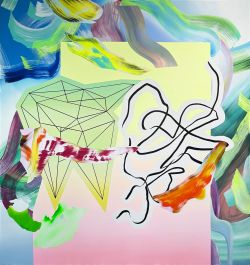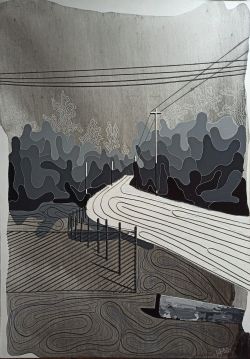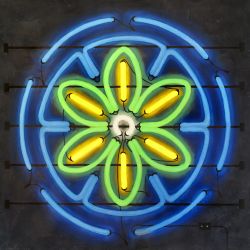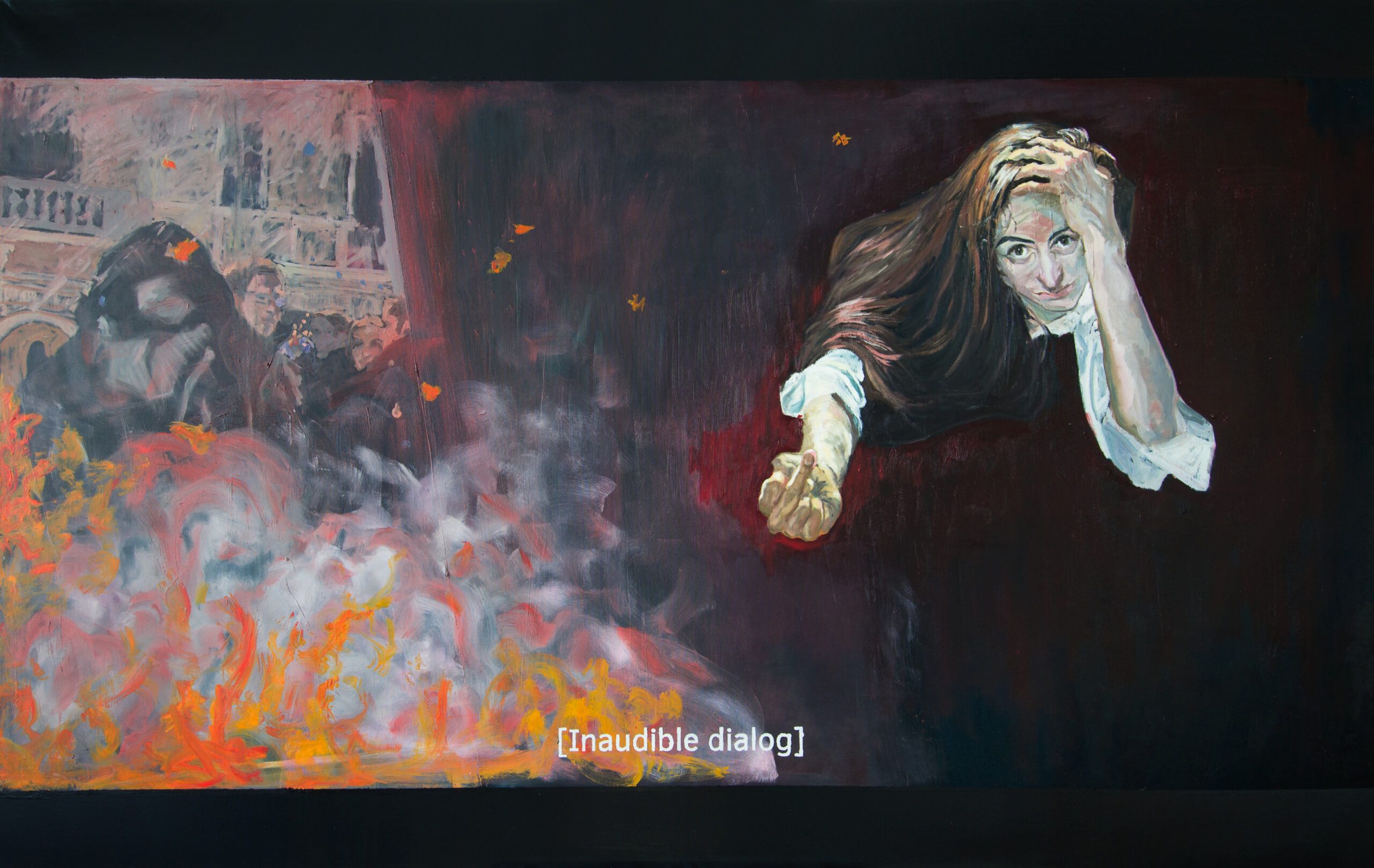- Home
- Finalists in Northern Europe Area
- PAINTING AND DRAWING – Finalists in Northern Europe Area
Painting and Drawing


In this page you can discover the finalist for the Painting and Drawing discipline in the Yellow Area (Northen Europe) rated by the audience and a professional Jury at the event in Vilnius, Lithuania, on June 25th.
One winner of each discipline will partecipate to the Biennial MArteLive in December and will have the chance to participate in Art residencies and more prizes.
Discover the greatest artists from the Northern Europe countries and keep supporting every talent!
Finalist Northern Europe

Sandra Strele
![]() Riga, Latvia
Riga, Latvia
I graduated in 2016 from the Art Academy of Latvia, acquiring Master’s degree at the Department of Painting, I also had spent one semester as part of a student exchange programme at the Royal Academy of Fine Arts in Antwerp.
I received the visual arts scholarship of the Boris and Inãra Teterev Foundation in 2012, the Brederlo von Sengbusch Art Prize in 2014, the SEB Banka scholarship in painting in 2016, the prestigious grant from The Elizabeth Greenshields foundation in Canada in 2019 and 2021 and Young Painter Prize in 2019. I have held a number of solo exhibitions, participated in group exhibitions and artist residences in Italy, Belarus, Estonia, Lithuania, Norway, India, Belgium, Germany, France and elsewhere.
Every artist during his or her lifetime has millions of ideas he or she would like to realize. Because of the lack of time, political situations such as covid – 19 crisis, economical crisis etc., personal reasons, lack of exhibition spaces, success and funding, and different other circumstances, artists during their lifetime make only a concrete amount of solo exhibitions. In this serie I paint the ideas and concepts of my own I would like to realize, playing with different known and unknown exhibition spaces, galleries and museums and painting my solo exhibition views.

Semifinalists North Europe

Mariam Akubardia
![]() Tiblisi, Georgia
Tiblisi, Georgia
I have a Bachelor’s and a Master’s degree from Tbilisi State Academy of Arts. As a professional artist, I took part in exhibitions, festivals, and other art-projects in Georgia, Turkey, Chelsea Gallery in New York, USA, and the Venice biennale in Italy, Latvia Riga. Apart from painting, I create installations and video art.
In 2014, I lived in an art commune and worked on an international festival Fest-i-nova in Georgia. I took part in organizing events there. I also created an installation and video art for the festival. Living in the art commune and working with the international community provided me with a chance to get to know a lot about international festivals and contemporary art in other countries. In 2016, my colleagues and I organized a group exhibition for an international festival ArtIsterium. For this exhibition I created an interactive installation. This year, my work is exhibited at the Venice Biennale. I am also working as an intern for the European Cultural Centre, which, along with others, organizes the Venice Biennale.
In 2019, my project ‘’Citrus Trees Covered Against the Frost’’ is the winner of the call “Women in the Fields of Design and Planning” competition, which was announced by the Heinrich Boell Foundation Tbilisi office as part of the Women of Bauhaus project. It aimed to discover and support new ideas that incorporate public spaces and design.
In 2020, my project “Disappeared Bus Stops in Botanical Gardens” is one of the winners of the call The Art & Freedom project, which was announced by the Friedrich Naumann Foundation.
My artwork is about me and my family. I was two when war came to us like a hurricane and threw us far away from home. All my work is connected to this experience. Instinctively, the themes of my work have mostly revolved around alienation and loss of home expressed through grass growing inside a house or a portrait of a girl surviving the storm.
Thus, I have been managing to rediscover myself among strangers and heal from the trauma experience during and after internal displacement during the 90s.

Mirjam Hinn
![]() Tartu, Estonia
Tartu, Estonia
Mirjam Hinn (born 1990) is an Estonian artist. She lives and works in Tartu, Estonia. Key themes in her practice have evolved from her fascination with the phenomenon of synaesthesia, the idea of blended senses.
Hinn is interested in investigating how it is possible to visualise experiences on canvases, for example hearing sounds (exhibition Solidified Sounds), sensing light (exhibition The Light Begins to Boil) or experiencing emotional shock (exhibition High Voltage). Her most recent work focuses on issues of inward human experiences. Mirjam Hinn’s latest exhibition “High Voltage” explores the intense states of mind and their role in being human. By dismantling extreme experiences, both positive and negative, into their constituent elements, the exhibition reveals the common underlying structures that characterise all the exhilarating experiences that Hinn has captured into the gamut of dazzling colour of her abstract paintings.
The formless, beyond reality and immaterial something wanders around in our reality as an impartial observer. The terrestrial society is unknown and unpredictable for the stranger, that’s why he may not understand or comprehend it entirely. This is probably why he prefers to observe everything from the distance. While spending time in reality, it does not criticize nor get offended, it measures. Also “it” or “he/she” does not know what is physical pain, laughter or smell. But man is interesting and unpredictable because he makes mistakes, is able to feel, forget or change her mind, and that causes ambiguous vibrations in the observer. It can be assumed that for the thousand-eyed island we are full of charming errors and anomalies. By observing everything from the distance, he never wants to involve our existing present. However, he still renders and interprets what he is seeing and experiencing. As a result the island creates his own personal utopias and artifacts that he stores on his abstract surface. Through the locomotion of inter-reality energies, this solitary scout has so far succeeded in roaming between the known and unknown reality by documenting, traveling and trembling in between.
Other Selected artists but not admitted to semifinals

David Kardava
![]() Tiblisi, Georgia
Tiblisi, Georgia
I am David Kardava (born 1990), visual artist and architect from Tbilisi, Georgia. I have been working as an architect in the architectural company (LTD ” AD PROJECT) since 2014-2020. Since 2020 i’m working in Tbilisi Sity Hall – Tbilisi Transport and Urban Development Agency.
At the same time I paint and draw.
I was born and have grown up in Abkhazia (the region of Georgia ocupied by Russia) and since my childhood, I have been painting and drawing. Because of my talent my parents enlisted me in art classes to continue my interest in painting and drawing at Art school in Zugdidi, where I studied and participated in the exhibitions.
In 2008 I was enrolled at the Tbilisi State Academy of Art and graduated faculty of architecture. During that period my art works was exhibited in ” Students best work “. Exhibition (05/2012) and ‘students work Exhibition “ (02/2012)
Presented artworks are made with mixed materials on canvas. All artworks are from the series called “The way” and made by me in 2020-2021.

Iza Carlucci
![]() Vilnius, Lithuania
Vilnius, Lithuania
I am a Lithuanian -Norwegian artist currently working on my masters degree at Vilnius Academy of Fine Arts. I have a bachelor degree in monumental arts, specialising in stained glass.
Sizes are varied, but close to the actual size of human body parts.

Inga Noir
![]() Vilnius, Lithuania
Vilnius, Lithuania
Inga Noir Mrazauskaitė (born in 1986) acquired bachelor and master degrees in Vilnius Academy of fine Arts. Inga actively works as a professional artist and painter. Since 2020 she is a member of Lithuanian Artists’ Association (Vilnius painters’ section). In 2019 Inga co-founded the “SinThesis Gang“ art movement.
Inga Noir has held 14 personal exhibitions and participated in 11 group exhibitions in Lithuania, Italy, Netherlands and Austria, and also has participated in art plain-airs in Lithuania.
These artworks were created as a part of the full project for a study of light in visual arts.
These artworks are a result of study of the ambiguity of light in painting. As a result artist combines the usual use of light in painting as an illusion together with quite unexpected use of literal light by using glowing pigments (or other techniques). In addition this combination results in pieces of art that change depending on the lighting of the room which is a third unexpected parallel when thinking about light in visual arts.
Thematically these artworks have a parallel subtext which emerges through reviving old ethnic symbolism through modern (cultural) objects (e.g. old Baltic symbols revived in neon lights), creating an intentional folk-shock as a tool to involve the viewer in polemicizing with the author and in that way to further revive the symbolism in the contemporary thinking as a result. Author says that the Baltic culture is very important to her, however nowadays it mostly remains only in our memory. Therefore she never misses a chance to remind of it through her art in different ways.

Kipras Černiauskas
![]() Vilnius, Lithuania
Vilnius, Lithuania
BORN: 1993
EDUCATION:
2013-2017 – BA at Vilnius Art Academy, monumental art department
2018-2020 – MA at Vilnius Art Academy, site specific art department
2019 – Erasmus+ studies at University of Montenegro, Faculty of Fine Arts, Montenegro
OTHER:
2020 – Membership in Lithuanian Artists Association
MAIN EXHIBITIONS AND PROJECTS:
2021
17th International Vilnius painting triennial (UN)DETERMINED, Vilnius Personal exhibition „The Decameron“ , Smoke Factory (Dūmų fabrikas), Vilnius
2019
Exhibition of a painting expedition “Painting the River”, Routers Art Lab, Vilnius
2018
Painting expedition “Painting the River” and exhibition in Kintai Arts artist residence, Kintai
Exhibition “The Look (Žvilgsnis)”, VDA gallery “Akademija”, Vilnius
2016
International project “In the trails of Baltic refugees”, Baltic Art Center, Visby, Gotland, Sweden
My usual artistic practice is oil painting, and it goes in three main ways:
1. Long term studio work with a specific theme.
2. Having outdoor adventures with spontaneous results.
3. Mixture of both that are mentioned above.
I like to see art as an extension of philosophy that is expressed through active actions such as creative work that also has an important emotional component to it, and which in sometimes can open some closed off information stored in the subconscious.
The classical Decameron, written in XIV c. by Giovanni Boccaccio, tells a story about 10 young people that decide to run away from the city of Florence, which is being ravaged by plague, to a distant countryside villa. They lock themselves in that villa and spend their time telling each other all kinds of stories ranging wide and far both thematically and geographically.
Unexpected, but important coincidence occurred – this interpretation of the Decameron that was finished painting in 2020 has coincided with a global coronavirus pandemic. People were forced to lock themselves between four walls and live of things that aren’t entirely real. Such life furthers one from reality even more than the XXI century usually does. This new context of the pandemic ties us with Florence that is being ravaged by the plague.
This interpretation of Boccaccio was done not directly, not by the book, instead, it was done trying to imagine a modern screen adaptation of the book.
The series is composed of 10 oil paintings on canvas, all of them are of the same dimensions 140 x 220 cm.
The paintings presented here are numbers II, IV, VI, VII and VIII of the 10 paintings.

Ieva Trinkūnaitė
![]() Vilnius, Lithuania
Vilnius, Lithuania
Ieva Trinkūnaitė was born in 1997 in Kaunas, now lives and creates in Vilnius. Ieva received her BA in printmaking in 2020 from Vilnius Academy of Arts, Lithuania. From 2018 Ieva participates in group exhibitions in Lithuania and abroad.
In October 2019 she held her personal exhibition “En el barrio* (*in the neighborhood (in spanish)”, in gallery “5 Malūnai“, Vilnius. After one year, in October 2020 she held her personal exhibition “Instinct” in Vilnius Academy of Arts gallery Titanikas. 2019 she won a 10-day rest at the Nida Art Colony by participating in the Algimantas ŠvėgŽda drawing competition, in the same year won the jury prize Foundry Art Center, Putting It Together 2: The Art of Assembling, Missouri, (USA).

Lukas Marc
![]() Kaunas, Lithuania
Kaunas, Lithuania
Lukas Marciulevičius acquired a bachelor degree in fine art upon his graduation in 2019 at Vilnius academy of art faculty of Kaunas. Although now he spends alot of his time creating digital art, he still favores painting and says that it is irreplaceable means of expression.
When asked about his works, artist talks about secession from chaotic world of information, return to tradition and meaning of a motherland in todays world. By observing his large canvases we see depicted fields, corridors, chambers, painted in almost harmonious fields of color. Even though Lukas paints mundane, well known spaces of our lifes, in a plane of canvas they become somewhat strange and alien. In some of his more colorful works we can see links to pop art, but overall impression is that his “style” owes a lot to abstract expressionism’s color field and hard edge movements – depicted motifs are heavily abstracted, often leaving silhouette or flat color only. Painted field becomes a line separating two fields of color. As the artist himself puts it – “in a painting I try to capture essence of the subject matter. In a process everything that is not necessary is discarded.”
From 2018 Lukas is constantly participating in group exhibitions of young artists in Lithuania. This year he presented his first solo exhibition in gallery “Akademija”.
This exhibition is about spaces, things and events seen in the outskirts of our home. Landscape is an inevitable unknown that we daily face. Did you noticed that when you travel between the cities of Vilnius and Kaunas there is nothing special to see unless you put a lot of effort into looking at it and thinking about it? About people living in those farmsteads and those crumbling houses? About imprints of those people that they leave in everything there is to see – those areas of land that they divide, their cattle in the fields, their rolls of hay that they have rolled, their private little woods that they’ve designed and left there standing for reasons maybe of a beauty. All these things and more are what landscape consists of. It is a simple thing but I don’t quite get it, neither as a genre of painting, nor as a thing to be thought about or looked at. This obscurity and absurdity of me trying to relate to mine surroundings brings me to my works. My inability to put in words what this relationship means to me, results in paintings that I make.

Adele Urban
![]() Kaunas, Lithuania
Kaunas, Lithuania
Im 27 years old, living in Kaunas, currently studying in VDA painting and working as digital artist. Its my final year and i want to move forward with visual arts.
I draw paintings that reminds of felt-tip pen. I like to use a sense of humor and irony in almost all of my works. Mostly using large formats. I create situations based on real life and feelings.












































